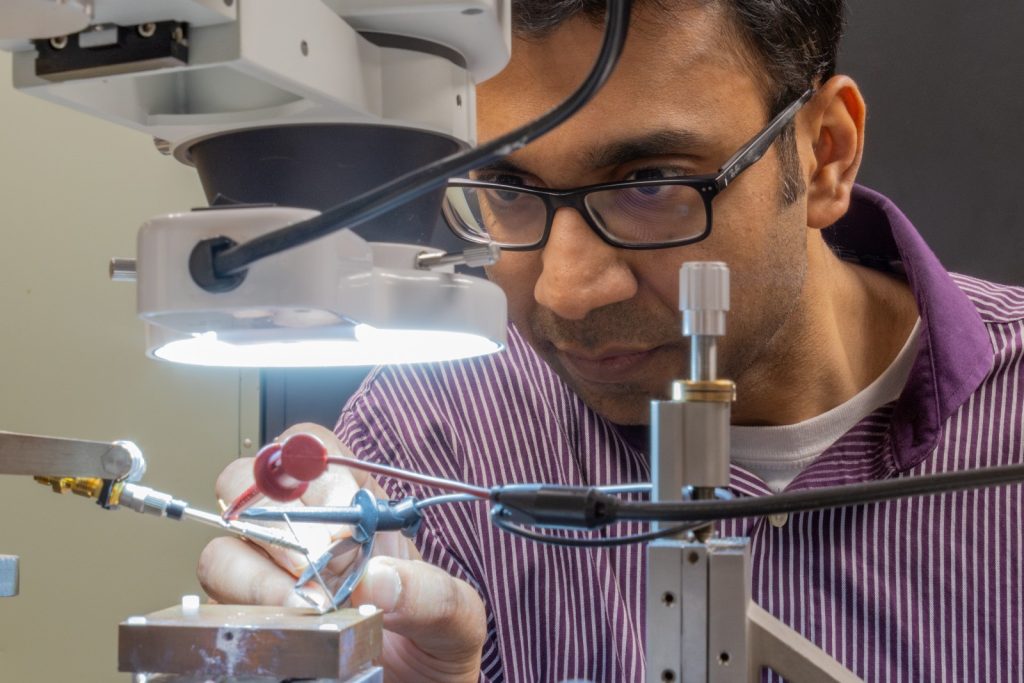Ohio State University and Tyndall have been awarded significant grants from National Science Foundation (NSF) and Science Foundation Ireland (SFI) for pioneering research in visible light-wave generation and manipulation. The research has the potential to revolutionize biophotonics with miniaturized, cost-effective photonic circuits that would enhance healthcare diagnostics and treatment.
The $425k U.S.-Ireland partnership VIBRANT (Visible Light-wave Generation and Manipulation through Non-Linear Waveguide Technology) was seeded by the Catalyst Program, jointly operated by Ohio State’s Institute for Materials and Manufacturing Research (IMR) and Tyndall National Institute, based at University College Cork in Ireland.
The project is one of several managed by Ohio’s IMR to advance international research projects and continue laying new groundwork for increasing international research collaborations. VIBRANT is a collaboration between Ohio State University and Ireland’s Queen’s University Belfast (QUB), Munster Technological University (MTU), and Tyndall. Separate funding has been provided to Tyndall and MTU by Science Foundation Ireland (SFI) while the Department for the Economy in Northern Ireland is funding the work at QUB.

“This international partnership underscores the project’s global impact, paving the way for advancements in photonic technologies across sensing, security, medical research, and communication fields,” said Ohio State’s Shamsul Arafin, who leads the project in the U.S. Arafin is an assistant professor in Electrical and Computer Engineering and director of the Optics and Photonics Research Lab (OPREL).
“Together, we address the integration of lasers onto tiny chips leading to the more widespread use of photonics in providing solutions across medical devices to consumer applications. For example, continuous optical sensing of biomarkers in the blood will enable more effective individual management of disease such as the monitoring of glucose for diabetes. Another example is realising efficient high brightness displays. Compact, high brightness displays are desired for phones and augmented reality displays where efficiency is required for extended battery life”, explains Brian Corbett, Senior Researcher, who leads the project in Ireland and heads up the III-V materials and devices group at Tyndall.
Research in biophotonics is important because it aims to improve the sensing and optical imaging techniques to study the structure and function of cells or tissue at the microscopic and nanoscopic levels.
The project will advance the forefront of optical technology by aiming to create a fully operational optical system on a centimeter-scale chip, a significant leap over the current cumbersome and costly state-of-the-art optics used in healthcare. This technological breakthrough is expected to offer significant advantages in terms of size, weight, power, and cost, thereby enabling a wide array of emerging applications
The VIBRANT project places a strong emphasis on fostering international collaboration and educational outreach. Graduate and postdoctoral students involved will gain invaluable experience through joint experiments and exchange visits with partner institutions, promoting a rich exchange of research knowledge and collaborative development.
More information available at: https://imr.osu.edu/new-nsf-grant-helps-imr-ireland-collaboration-spearheading-innovative-photonics-research/
